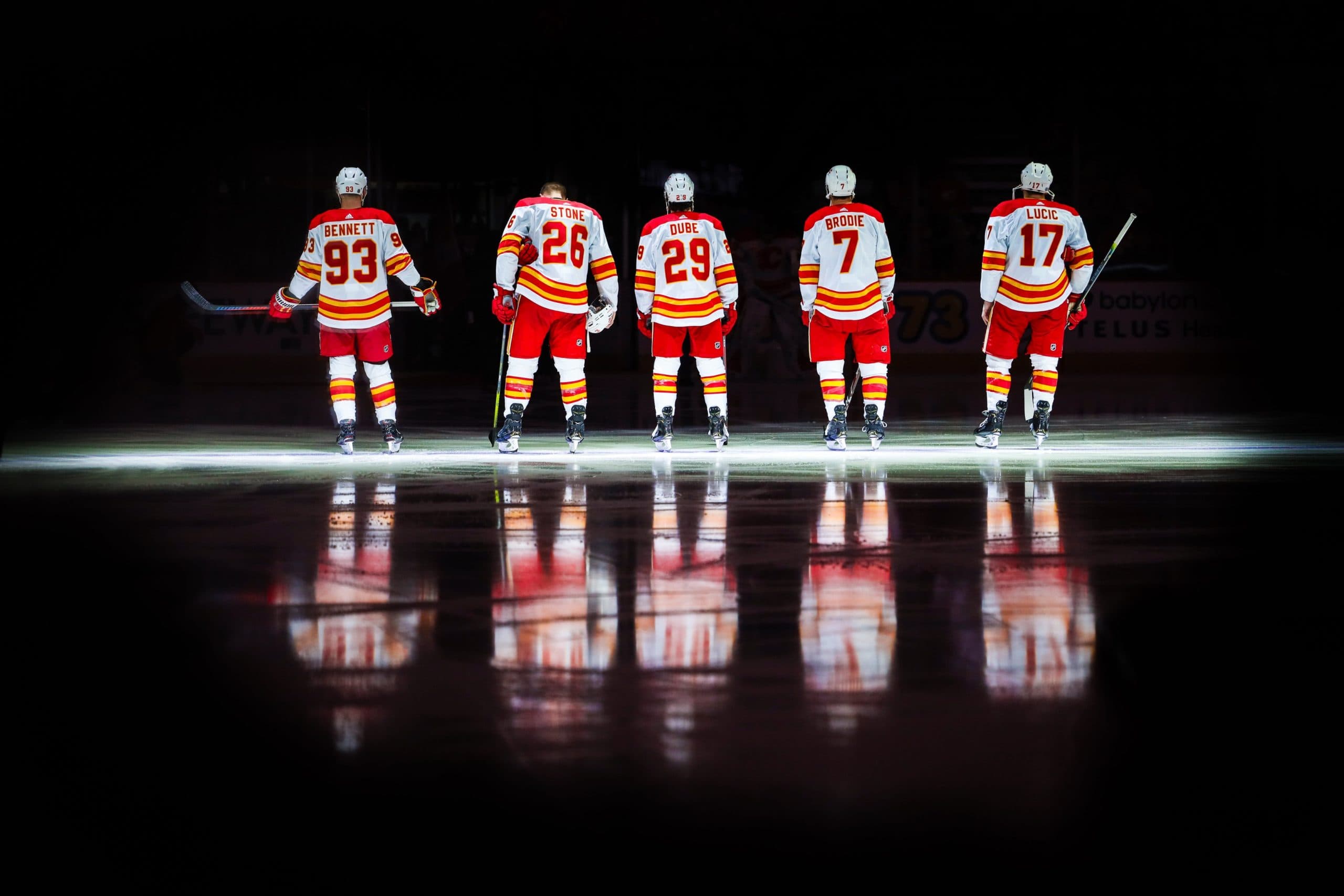Even with higher cap, Flames have big decisions to make

By Ryan Pike
4 years agoThe March edition of the National Hockey League’s general manager meetings took place last week in Florida and one of the big takeaways was that the 2020-21 salary cap will be a decent amount higher than it was in 2019-20. That’s good news for the 31 NHL clubs, but despite a rising cap the Flames will still have some tough roster decisions to make.
But first, let’s talk escrow
Okay, let’s get into the weeds a bit, folks, so you can get why the NHL’s players don’t want the cap to go up too much:
- Every year, the NHL provides projections for how they expect hockey-related revenues (HRR) to grow in the upcoming season. Their “final” forecast is given prior to the NHL Draft.
- Based on this “final” forecast, the base salary cap is set at 50% of projected HRR for the upcoming season.
- The NHLPA has the option to accept the NHL’s forecast and cap number, or “escalate” the cap by up to 5% for the upcoming season. “Escalating” the cap puts more money into the system for the upcoming season, but also runs the risk of increasing escrow payments in the event the NHL’s HRR forecast isn’t amazing.
- The NHL (and the teams) hold onto a chunk of every player’s salaries (“escrow” funds), roughly 20%, until the actual HRR for a given season can be confirmed and they can ensure payments to players match 50% of HRR (as defined in the CBA). They’re about two seasons behind in the escrow payments back to players.
- When we say that Matthew Tkachuk makes $7 million per season, that’s not exactly true. His contract is for $7 million, subject to escrow adjustments, so he’ll make around $5.6 million pre-taxes due to escrow. Then he might get the rest of that money later on once HRR has been confirmed for that season, usually a couple years after the fact.
- Escrow is considered the only big bugaboo for players in the current CBA negotiations.
The range for the 2020-21 cap given to reporters by Gary Bettman at the GM meetings was between $84 and $88.2 million. But a skeptical player agent texted The Athletic’s Pierre LeBrun and predicted a lower number. Regardless, even if we go with $84 million (assuming the NHLPA doesn’t inflate it), the cap will be $2.5 million higher.
That doesn’t leave the Flames with a ton more wiggle room than they have right now.
And now, math…
The Flames cap situation for this year is tight, and complicated somewhat by Juuso Valimaki likely spending the whole season on long-term injury reserve (LTIR). But here’s what we think we know: barring a slew of late recalls from the American Hockey League, the Flames likely won’t be over the $81.5 million cap for this season. (This is presuming that Rasmus Andersson and Oliver Kylington combine for around $100,000 in games-played performance bonuses.)
Valimaki won’t be on LTIR next season, which removes a good chunk of “dead money” from the cap. But the buyouts for Michael Stone and Troy Brouwer remain, combining for $2.667 million of go-away money.
The 2020-21 roster locks currently under contract break down thusly:
- Goalie David Rittich ($2.75 million)
- Defenders Mark Giordano ($6.75 million), Noah Hanifin ($4.95 million) and Rasmus Andersson ($4.55 million).
- Forwards Matthew Tkachuk ($7 million), Johnny Gaudreau ($6.75 million), Sean Monahan ($6.375 million), Mikael Backlund ($5.35 million), Milan Lucic ($5.25 million), Elias Lindholm ($4.85 million), Derek Ryan ($3.125 million), Sam Bennett ($2.55 million) and Dillon Dube ($778,333).
So that leaves 10 open roster spots (one goalie, four defensemen, and five forwards) and roughly $20.3 million to fill those spots. And that’s where the fun begins.
Andrew Mangiapane is a pending restricted free agent with arbitration rights and he’s been arguably the team’s most consistently effective even strength performer. He’ll get a big raise from his current $715,000 deal. Pending unrestricted free agent Cam Talbot will either be back at a raise or replaced by someone making similar coin. TJ Brodie, Travis Hamonic, Derek Forbort, Erik Gustafsson and Michael Stone are all pending UFAs – if you accept the premise that Andersson grabbed a top four spot (and top four money), who leaves and who stays among the other five defenders? Is Mark Jankowski back as a pricey bottom six player – his qualifying offer would be $1.75 million – or does he take a pay cut? Or get replaced by someone like, say, pending RFA Glenn Gawdin.
Take that $20.3 million and burn off $3 million on a goalie, $7 million on a couple defensemen and $2 million on Mangiapane’s new deal and suddenly there’s only $8.3 million remaining and six spots to fill. The cap space will disappear very quickly and it’ll be interesting to see what shuffling Brad Treliving does following the end of the season (or playoffs).
Recent articles from Ryan Pike





